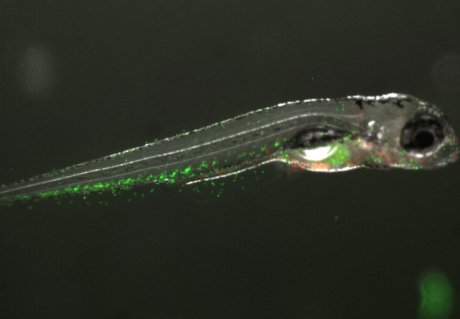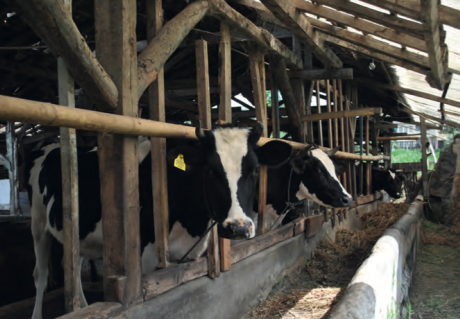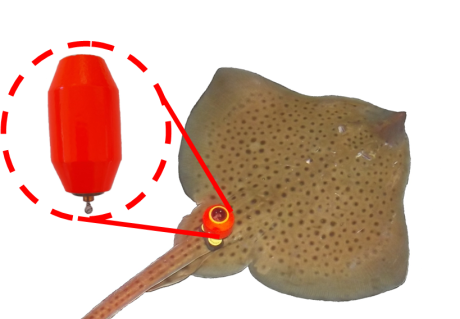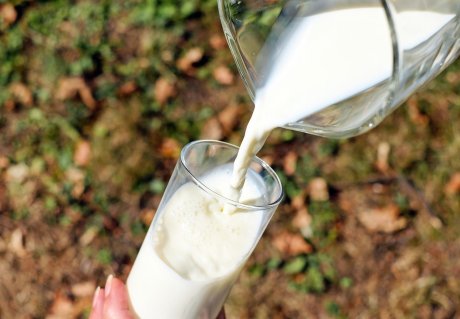
Beat the clock: Speeding up the improvement of manure management at Indonesian smallholder dairy farms
WIAS Magazine - Spring edition 2022
Research Highlight
Key words: Manure management, smallholder dairy farms, environmental emissions
Improper manure management at smallholder dairy farms can be a problem, but how significant the impacts are unknown. An evaluation of environmental emissions associated with manure management at multiple levels can help speed up the improvement of manure management at Indonesian smallholder dairy farms. Here we identify the major causes of emissions related to manure management and suggest potential improvements.
The higher demand for milk has increased the numbers of dairy cattle at Indonesian smallholder dairy farms. Smallholder dairy farms now have, on average, 2 to 4 cattle per farm and the Indonesian government plans to increase this to 7 cattle per farm. The dairy farmers not only produce more milk, 10-14 litres milk per cow per day, but also more manure. Most of these farms are in peri-urban areas with limited land to store and apply manure. As a result, most of the manure is discharged which pollutes the environment. Losses of nutrients from manure, mainly nitrogen (N) and phosphorous (P), contribute to eutrophication of the Citarum river, one of the longest rivers in Indonesia. Nitrate (NO3‑) pollution can also cause groundwater to become unsuitable for drinking. During storage, treatment and application of manure, moreover, gases can emit to the environment (i.e., nitrous oxide (N2O), ammonia (NH3) and methane (CH4)). The Indonesian smallholder dairy farmers need to beat the clock and speed up improving their manure management to avoid polluting the environment. However, the knowledge lacks on how large the challenge is and how this can be done.
Improving manure management involves many aspects, including feeding type, quantity, and composition, the physiological stage of the animals, land for storing and applying manure, and costs for manure management.
To speed up the improvement of manure management at Indonesian smallholder dairy farms, this PhD research evaluated emissions to the environment associated with manure management at multiple levels: animal, farm, regional, and value chain. Through this approach, we identified the major causes of emissions related to manure management and to come to integrated potential improvement options.
Manure is an inevitable by-product of dairy production. Most of the nutrients from the feed, consumed and digested by the animals, are converted into energy, and used to maintain body temperature and perform other metabolic functions (i.e., maintenance, milk and meat production, and reproduction). The nutrients that are not used for those functions end in manure, consisting of a solid part (faeces or dung which consists for a major part of undigested feed) and a liquid part (urine).
Animal level
Information about N-P excretion of dairy cattle can be used to estimate nutrient losses from different manure treatment options and to quantify differences in nutrient use efficiency among farms and manure management systems. At animal level, we developed a model to accurately predict losses of N-P. To predict the N excretion in faeces (QFN) we used the Lucas equation describing the apparent digestibility of nutrients, independent of the feed, based on true digestibility, and the endogenous loss of that nutrient in the faeces. It is widely used in nutrient digestibility studies for ruminants, mostly for protein and N (1,2). Since most of P ends in faeces, we calculated P excretion based on the difference between phosphorous intake and retention by the animal (3).
Figure 1 shows the model evaluation of QFN. Results indicate that the model presented in this study can be applied under very different circumstances. Using the proposed QFN model and calculation of P excretion enabled us to predict N-P from manure. The average total N excretion was 197 g animal-1 day-1 which consists of faecal N (96 g animal-1 day-1) and urinary N (101 g animal‑1 day‑1). The average total P excretion was 56 g animal-1 day-1. From the results we calculated nutrient use inefficiency which we found to be higher than in other literatures. This high nutrient use inefficiency can be explained by the low nutrient utilization of the cattle due to limitation by other nutrients, by genetic potential, by health-related factors, or it could be that the diets contained too many nutrients (4).

Farm and regional level
Information on N-P excretion at animal level can subsequently be used to estimate the flows and losses of nutrients on dairy farming systems (DFS). Nutrient balances of DFS are determined as the difference between nutrient inflows (feed and artificial fertilizer) and outflows (meat, livestock, and manure). The results are under development, but if we find that the total nutrient inflows into the DFS exceeds the total outflows, we can assume that the difference is lost to the environment in the form of leaching and volatilization N and run-off of P. If the total nutrient inflows into the DFS is lower than the total outflows, we assume nutrient extraction from the soil. Once we know this we can scale up the nutrient losses from the farm level to the regional level to determine the sector’s contribution to the pollution of the Citarum river and the potential options for improvement.
Value chain level
In the dairy value chain manure management contributes to global emissions. Here, we performed a life cycle assessment (LCA) to estimate greenhouse gas emissions intensity (GHGEI) from smallholder dairy farms.
Seasonal differences in management practices, including manure management can be an important source of variability of GHGE estimates of smallholder dairy farms in the tropics. Figure 2 shows the results of our LCA. The GHGEI in the rainy season was on average 1.3 kg CO2-eq/kg fat-and-protein-corrected milk (FPCM) which was higher than in the dry season (1.0 kg CO2-eq/kg FPCM). The difference can be explained by emissions from enteric fermentation, manure management and forage cultivation. Emissions related to manure management were generally lower in the dry season than in the rainy season due to different management systems (5).

Potential improvement options
Having evaluated emissions to the environment associated with manure management at multiple levels we identified a number of potential improvement options. The key insight of this research is that manure management improvements should be done simultaneously at animal, farm, regional and value chain level. At animal level, nutrient use inefficiency of dairy cows needs to be reduced. Literature shows that this can be done by providing a balanced feed ration, reducing heat stress of cows, improving animal health, and genetic of animals (6–9). Through our farm visit, we also discovered that at farm and regional level, a step towards improving manure management is to reduce the farms’ nutrient imbalance by increasing manure collection and using manure as fertilizer. We also found that biodigesters were not used optimally, and optimizing the use of bio-digesters could improve manure management at farm level. These strategies are also relevant at the value chain level. Additionally, improving manure management requires a proper enabling environment. In our view, the relevant strategies to setting up an enabling environment are educating farmers, encouraging collaboration between stakeholders (dairy cooperatives, dairy farmers, crop farmers, composters, government etc.), relocating dairy farming, and phasing out subsidies.
In conclusion, the govrnment strategy to meet the higher demand for milk by adding more dairy cattle in the urban area should be approached carefully. This research calls for urgent improvements to manure as current management causes environmental impacts at animal, farm, regional and value chain. Thankfully there are many ways manure can be managed better. Shifting from poor manure management to better manure management will not be feasible without involving many stakeholders which may not be easy and may take time to realize, but this process must start now for a sustainable Indonesian dairy production in the future.
References
1. Krizsan SJ, Mirzaei Alamouti H, Rinne M, Huhtanen P. Indigestible neutral detergent fibre in predictions of grass and red clover silage digestibility. Grass Forage Sci. 2014;69(2):266–75.
2. Weisbjerg MR, Hvelplund T, Søegaard K. Prediction of digestibility of neutral detergent solubles using the Lucas principle.
3. NRC. Nutrient Requirements of Dairy Cattle. 2001;
4. Zahra W Al, Middelaar CE van, de Boer IJM, Oosting SJ. Predicting nutrient excretion from dairy cows on smallholder farms in Indonesia using readily available farm data. Asian-Australasian J Anim Sci [Internet]. 2020 Dec 1;33(12):2039–49. Available from: http://ajas.info/journal/view.php?doi=10.5713/ajas.20.0089
5. Apdini T, Al Zahra W, Oosting SJ, de Boer IJM, de Vries M, Engel B, et al. Understanding variability in greenhouse gas emission estimates of smallholder dairy farms in Indonesia. Int J Life Cycle Assess [Internet]. 2021;26(6):1160–76. Available from: https://doi.org/10.1007/s11367-021-01923-z
6. Kaufman JD, Bailey HR, Kennedy AM, Löffler FE, Ríus AG. Cooling and dietary crude protein affected milk production on heat-stressed dairy cows. Livest Sci [Internet]. 2020 Oct;240:104111. Available from: https://linkinghub.elsevier.com/retrieve/pii/S1871141319311370
7. Garg MR, Sherasia PL, Bhanderi BM, Phondba BT, Shelke SK, Makkar HPS. Effects of feeding nutritionally balanced rations on animal productivity, feed conversion efficiency, feed nitrogen use efficiency, rumen microbial protein supply, parasitic load, immunity and enteric methane emissions of milking animals under field condi. Anim Feed Sci Technol [Internet]. 2013;179(1–4):24–35. Available from: http://dx.doi.org/10.1016/j.anifeedsci.2012.11.005
8. Pryce JE, Bell MJ. The impact of genetic selection on greenhouse-gas emissions in Australian dairy cattle. Anim Prod Sci [Internet]. 2017;57(7):1451. Available from: http://www.publish.csiro.au/?paper=AN16510
9. Herath HMSP, Mohammad S. The current status of cattle breeding programmes in Asia [Internet]. International Atomic Energy Agency (IAEA); 2009. Available from: http://www-pub.iaea.org/MTCD/publications/PDF/te_1620_web.pdf






